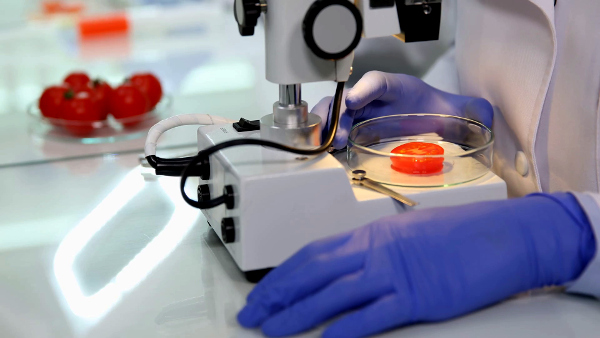Scientists in India have discovered how Salmonella enters plants to cause pre-harvest contamination of produce.
Most Salmonella outbreaks are linked to contamination from post-harvest handling and transportation but the bacterium can enter the plant earlier from contaminated soil. Salmonella can reach the soil from manure containing animal feces or contaminated irrigation water.
The study from the Indian Institute of Science (IISc) and the University of Agricultural Sciences (UAS), Bengaluru looked at tomato plants and was published in the journal BMC Plant Biology.
Researchers found Salmonella enters through a gap created when a lateral root branches out from the plant’s main root and that it can penetrate the deeper layer of the root. This is different to other disease-causing bacteria that enter the root, fruit or leaf by producing enzymes to break down the plant’s cell wall. Salmonella is incapable of using cellulose or pectin so invasion by degrading the cell wall of the plant is not possible.
They studied how different types of bacteria including Salmonella colonize the roots of tomato plants. Researchers plan to look at Salmonella infiltration in other vegetables and strategies to detect and prevent soil contamination in future work.
While other bacteria were spread across the root, Salmonella clustered around areas where lateral roots emerge. When a lateral root pierces the wall of the primary root to spread across the soil, it leaves a tiny opening. Using fluorescent tagging and imaging, researchers discovered that Salmonella bacteria were using this gap to enter the plant. They used thale cress and tomato as plant model systems.
To understand whether Salmonella entry via the lateral root was a chance or triggered event, the team counted the number of lateral roots before and after Salmonella treatment and compared it with a control. Salmonella could not induce lateral root formation in thale cress.
The study found under the same conditions, a plant with more lateral roots harbored a greater concentration of Salmonella than one with fewer lateral roots. When plants were artificially induced to produce more lateral roots, the Salmonella concentration increased. Tomatoes from these plants also tested positive for Salmonella, revealing its ability to travel up to the fruit.
The team found that when salt concentration in the soil increases, plants produce more lateral roots and there is an increase in the risk of Salmonella colonization on roots and transmission to the fruits.
This means outbreaks due to consumption of raw fruits and vegetables could be attributed to soil stress factors in addition to climatic, agronomic and plant factors, according to the study.
Source: FSN
Image Courtesy: VideoBlocks
You may also like
-
New Heat-Based Approach To Cancer Treatment Can Reduce Chemotherapy Doses
-
Scientists Take A Major Step Towards Unification Of Classical & Quantum Gravity
-
India Graphene Engineering and Innovation Centre (IGEIC) Under the Vision of Viksit Bharat@2047 Launched
-
New High-Performance Gas Sensor can Monitor Low Level Nitrogen Oxides Pollution
-
Antidepressant Drug can be Repurposed for Treating Breast Cancer
